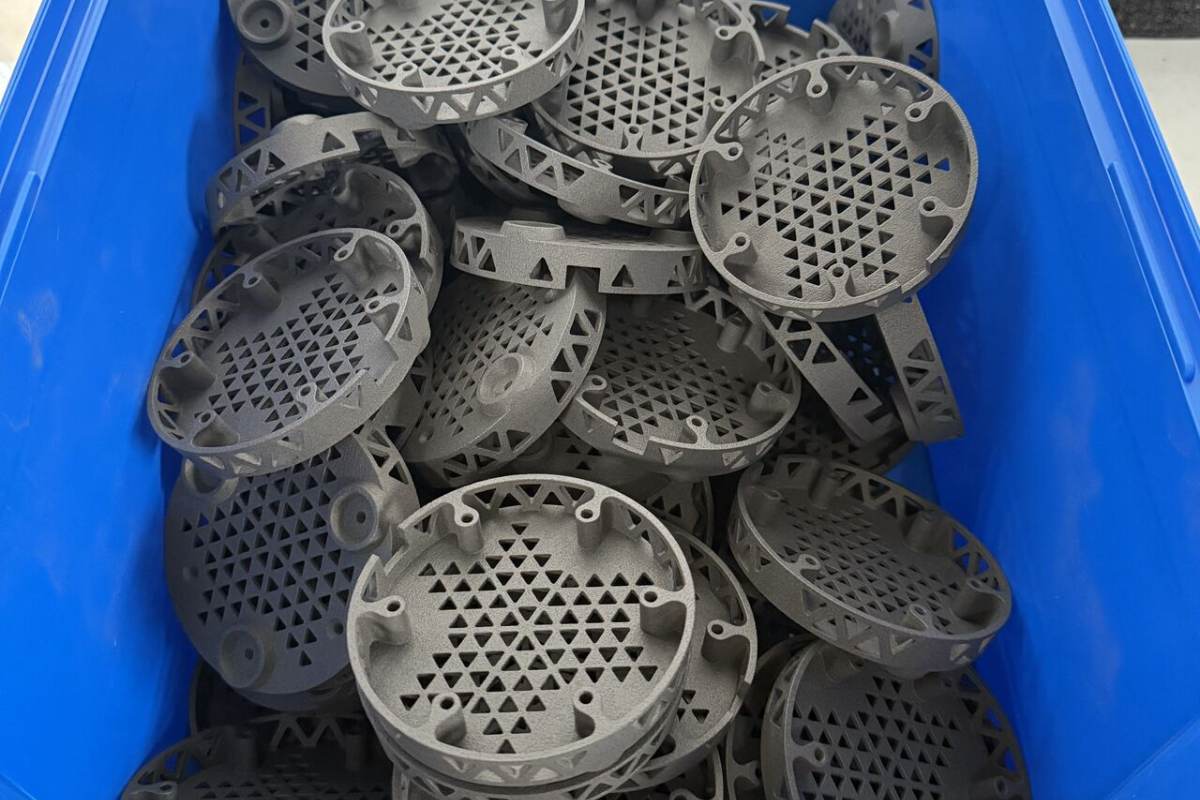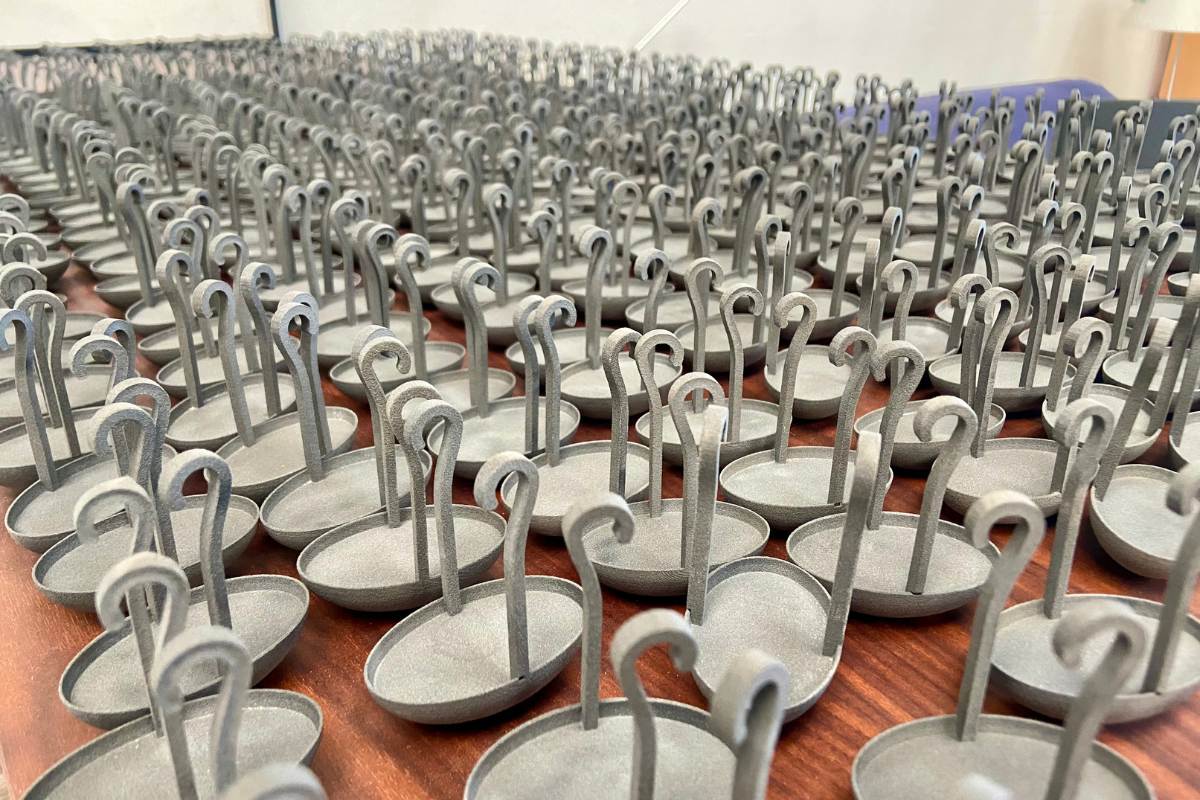In recent years, 3D printing in medicine has become one of the most transformative tools in the healthcare sector. Its ability to create personalised devices, tailored to the real needs of patients and professionals, is revolutionising the way medical care is delivered.
In this article, we explore how Additium 3D technology is improving public and private healthcare from its headquarters in Valencia, and look at real-life cases that show the potential of this technology to transform healthcare.
3D printing in medicine: from theory to practice
Unlike other sectors, where 3D printing is mainly used for rapid prototyping, in healthcare it has a direct impact on people's lives. The use of anatomical models, surgical guides, customised orthoses or functional aids has become an accessible reality thanks to companies such as Additium 3D.
This Valencian company does not sell printers and is not focused on large industrial print runs. Its model is based on customised, local manufacturing, in direct collaboration with medical teams. Each piece is designed with a purpose: to solve a specific need.
Real clinical applications of 3D printing: Additium 3D Success Stories
A support to improve dialysis at a Valencia hospital

One of the most significant projects has been the manufacture of a small stand for dialysis patients. Designed in close collaboration with the hospital's nursing staff, its aim was to avoid direct contact of the catheters with the skin, reducing the risk of infection and increasing comfort.
This part is printed in biocompatible materials and delivered ready to use within hours, allowing for safer and more efficient care.
Personalised orthopaedics for Pablo

Another poignant case is that of Pablo, a young man with a neuromuscular disease who needed a cranial support for your motorised wheelchair. Its structure did not provide head support, which limited its autonomy.
The Additium team scanned his posture and the chair with a 3D scanner, and manufactured a Nylon 12 support using SLS technology, perfectly adapted to his body. Pablo can now use his chair more comfortably, safely and stably.
"Well, very comfortable and safe. And thanks to Additium 3D, it's great," says Pablo himself.
What are the main applications of 3D printing in healthcare?
3D printing in healthcare has many, many applications. Some of the most relevant include:
Personalised medical devices
From splints to fixation devices, adapted to the patient's anatomy. They are more effective, comfortable and less invasive.
2. Surgical guides
They allow for more precise planning of interventions and reduced operating theatre time, which translates into lower risk and better recovery.
3. Anatomical models
Ideal for teaching, surgical planning or explaining complex procedures to patients. They are printed on materials that simulate the texture of real tissue.
4. Orthopaedics and functional aids
Chairs, supports, adaptations for the home... 3D printing allows for inclusive and affordable, fully customised solutions.
5. Implants and prostheses
Still under development, but breakthroughs have already been made in materials that allow for more precise and compatible implants.
6. Artificial organs and tissues
Although their clinical use is still limited, advances in bioprinting open the door to a future where it is possible to 3D print organs for transplantation or testing.
3D printing is not only transforming hospital management and operations, it is also opening the door to amazing innovations such as the creation of organs and tissues for medical use. In this article on 3D printed organs and their applications in medicine we explore how this technology is bringing what once seemed like science fiction closer to reality.
Key benefits of 3D printing in medicine
The 3D printing in medicine not only represents a technological revolution, but also a practical tool with a direct impact on the quality of care. It makes it possible to move from generic solutions to personalised solutions, manufactured in record time and with full traceability. For healthcare centres, hospitals and clinics, it represents a strategic advantage: adapting to the patient, streamlining processes and optimising resources. These are some of the most outstanding benefits:
- Cost reduction thanks to local and on-demand production. Intermediaries, long waiting times or unnecessary bulk orders are avoided.
- Agility: manufacture of devices within hours or a few days, ideal for clinical situations requiring rapid responses.
- Full adaptation to the anatomy and specific needs of the patient. Nothing generic, everything designed to fit perfectly.
- Traceability and internal controlEach part is designed, validated and produced according to medical standards, without relying on third parties.
- Real innovation with immediate clinical impactis not just R&D, it is applied technology that improves the experience of the patient and the medical team.
Additium 3D: your 3D printing partner for healthcare
If you are a hospital purchasing manager, medical area manager or healthcare professional and you think that 3D printing could help you, the Additium 3D team can accompany you through the whole process.
From initial design, through material selection and manufacture, to ready-to-use delivery. They work without intermediaries, which guarantees an agile, local and traceable service.
Anatomical models, prostheses, orthoses, functional aids, surgical guides, implants and even artificial organs.
Depends on the use. The most common are FDM, SLS or SLA, depending on the material and precision required. Additium 3D works mainly with high precision industrial printers.
A part is designed from scans or medical data, the appropriate material is selected and printed for immediate or scheduled use.
CAD design programmes and medical software are used to generate customised models which are then printed according to clinical need.
In the experimental phase, bioprinters using living cells and biomaterials are used to create organ-like structures.
Tissues such as skin, cartilage, blood vessels and even heart or kidney structures are now being developed, although their actual application is still under investigation.







